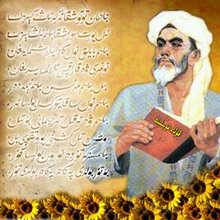Uyghur (China)Also written Uyghur (Chinese gov't); Uighur (some linguists); Wei-wu-er-zu (Mandarin)For centuries the Uyghur people were an important link between China and the rest of the world. Uyghur communities were typically based in oases or fertile valleys, growing cereals and fruit. The strategic importance of these oasis bazaars enabled many Uyghur traders to become key middlemen on the Silk Road caravan routes between the Orient and Europe.PopulationOver 9.3 million Uyghurs live in China in an area now known as Xinjiang Uyghur Autonomous Region. Some major cities in the east and south of China also have small Uyghur communities. Several hundred thousand Uyghurs live in communities worldwide in Kazakhstan and Uzbekistan, in Turkey, Europe, North America and Australia. Present-day Xinjiang is a vast 637,000 square mile region of steppe, desert and mountains.LanguageUyghur is a Turkic language of the Altaic family related to Uzbek, Turkish, Kazakh and Kyrgyz. The Uyghurs in Xinjiang write their language in a modified Arabic script. Cyrillic and Latin scripts were also in use between 1950 and 1980. Around 1980 a new Arabic script was introduced which has since been the standard alphabet.LivelihoodTraditionally farmers and shepherds, the Uyghurs have made their homes in teh many oases of the Tarim basin, containing one of the most arid deserts in the world, the Taklimakan, and also on the grasslands of the Heavenly Mountains, the Pamirs and the Kunlun Range. Living in Asia's heartland, Uyghurs in the oasis towns developed the skills and facilities which an international trade route demanded. Although many Uyghurs are now heavily involved in manufacturing, mining, oil drilling, trade and transportation, their pastoralist past still shows itself in their diet. In addition to the now traditional naan bread, pasta or rice, most meals contain meat, particularly lamb/mutton, and often some dairy product e.g. mil-tea, butter, cream, yhghur and khurt (a kind of very sour cheese).History The Uyghurs once ruled Mongolia, building its first walled cities, and creating its first literate civilization. In AD 840, another Turkic people, the Kyrgyz (or Kirghiz), drove the Uyghurs out of Mongolia southwards into north Gansu. After divisions arose, some Uyghurs remained but others moved on further west into present day Xinjiang, where they established the Kingdom of Khocho. Later individual dynasties emerged and the Uyghur oasis towns became small independent states.
one who come to Uyghur world ,will never forget the The Famous Food Polo !
Uyghur Nan ( also Naan ) , very Tastful and Famous all china .
Uyghur Girl is Dancing , Uyghur Triditional Dance is very beautiful , all of the Uyghurs can dance , they have a party named Meshrep which everybody who joined dance .
Uyghur Caravan in the Teklimakan Desert .
Uyghur Oldman cooking fishes at the Tarim River Side
Uyghur Mother baking Nan , the place a naan is baked called Tonur in Uyghur , and all the Uyghur old woman can bak the Tasteful Naan Also written Uyghur (Chinese gov't); Uighur (some linguists); Wei-wu-er-zu (Mandarin)For centuries the Uyghur people were an important link between China and the rest of the world. Uyghur communities were typically based in oases or fertile valleys, growing cereals and fruit. The strategic importance of these oasis bazaars enabled many Uyghur traders to become key middlemen on the Silk Road caravan routes between the Orient and Europe.PopulationOver 9.3 million Uyghurs live in China in an area now known as Xinjiang Uyghur Autonomous Region. Some major cities in the east and south of China also have small Uyghur communities. Several hundred thousand Uyghurs live in communities worldwide in Kazakhstan and Uzbekistan, in Turkey, Europe, North America and Australia. Present-day Xinjiang is a vast 637,000 square mile region of steppe, desert and mountains.LanguageUyghur is a Turkic language of the Altaic family related to Uzbek, Turkish, Kazakh and Kyrgyz. The Uyghurs in Xinjiang write their language in a modified Arabic script. Cyrillic and Latin scripts were also in use between 1950 and 1980. Around 1980 a new Arabic script was introduced which has since been the standard alphabet.LivelihoodTraditionally farmers and shepherds, the Uyghurs have made their homes in teh many oases of the Tarim basin, containing one of the most arid deserts in the world, the Taklimakan, and also on the grasslands of the Heavenly Mountains, the Pamirs and the Kunlun Range. Living in Asia's heartland, Uyghurs in the oasis towns developed the skills and facilities which an international trade route demanded. Although many Uyghurs are now heavily involved in manufacturing, mining, oil drilling, trade and transportation, their pastoralist past still shows itself in their diet. In addition to the now traditional naan bread, pasta or rice, most meals contain meat, particularly lamb/mutton, and often some dairy product e.g. mil-tea, butter, cream, yhghur and khurt (a kind of very sour cheese).History The Uyghurs once ruled Mongolia, building its first walled cities, and creating its first literate civilization. In AD 840, another Turkic people, the Kyrgyz (or Kirghiz), drove the Uyghurs out of Mongolia southwards into north Gansu. After divisions arose, some Uyghurs remained but others moved on further west into present day Xinjiang, where they established the Kingdom of Khocho. Later individual dynasties emerged and the Uyghur oasis towns became small independent states.
one who come to Uyghur world ,will never forget the The Famous Food Polo !
Uyghur Nan ( also Naan ) , very Tastful and Famous all china .
Uyghur Girl is Dancing , Uyghur Triditional Dance is very beautiful , all of the Uyghurs can dance , they have a party named Meshrep which everybody who joined dance .
Uyghur Caravan in the Teklimakan Desert .
Uyghur Oldman cooking fishes at the Tarim River Side
Uyghur Mother baking Nan , the place a naan is baked called Tonur in Uyghur , and all the Uyghur old woman can bak the Tasteful Naan















